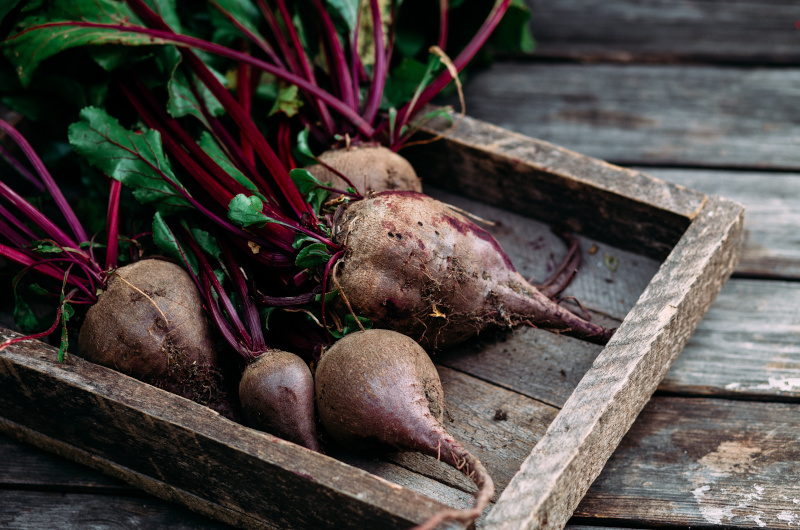How To Grow Beetroot
Beetroot, with its vibrant color and earthy flavour, is a versatile and nutritious vegetable that can be easily grown in your garden. Whether you’re a seasoned gardener or a beginner, cultivating beetroot can be a rewarding experience. This article will provide you with a comprehensive guide on how to grow beetroot successfully in your UK garden. From selecting the right varieties to harvesting your homegrown beets, follow these steps to enjoy a bountiful harvest.
Choosing the Right Variety:
Before starting your beetroot-growing journey, it’s important to choose the right variety. There are various types of beets available, including round, cylindrical, and striped varieties. Consider factors such as taste preference, shape, and color when selecting the variety that suits your culinary needs. Round varieties are great for pickling. Cylindrical varieties are great for slicing and eating in salads immediately after cooking. Striped or lighter coloured varieties tend to have less intense flavour, ideal for those who aren’t fans of the strong, earthy taste of traditional darker varieties.
Preparing the Soil:
Beetroot thrives in well-drained soil with a pH range of 6.0 to 7.5. Begin by clearing the area of any weeds or debris. Loosen the soil using a fork or tiller and remove any large stones or clumps. If you’re growing in an established plot, it’s advisable to sow beetroot seeds (and other root crops) into the space used to grow potatoes the previous year, as potatoes do a great job of breaking up the soil, reducing the amount of soil preparation needed. Incorporate organic matter into the sowing location, such as compost or well-rotted manure, to improve soil fertility and structure.
Sowing Beetroot Seeds:
Beetroot can be grown from seeds or seedlings. If starting from seeds, sow them directly into the prepared soil. Make shallow drills or furrows with a spacing of around 10-15cm (4-6 inches) apart. Sow the seeds thinly along the drills and cover them with a thin layer of soil. Ensure the soil remains consistently moist during germination. Beetroot seeds come in two varieties – multigerm, which produces multiple plants from a single seed, or monogerm, which produces just one seedling per seed. Multigerm varieties tend to germinate more reliably, so can be sown more thinly.
Providing Optimal Growing Conditions:
Beetroot requires full sun to partial shade for optimal growth. Water the plants regularly to keep the soil evenly moist, especially during dry periods. Avoid overwatering, as it can cause the roots to rot. Mulching around the plants helps retain moisture and suppress weed growth.
Thinning and Transplanting:
When the seedlings have developed their first true leaves, thin to ensure adequate spacing (especially multigerm varieties). Beetroot seedlings should be thinned to around 5-10cm (2-4 inches) apart. If you started with seedlings, transplant them carefully into the prepared soil, maintaining the same spacing.
Watering and Fertilising:
Consistent moisture is crucial for beetroot growth. Water the plants deeply once or twice a week, depending on weather conditions. Ensure the soil is moist but not waterlogged. Applying a balanced organic fertiliser during planting and a side-dressing of nitrogen-rich fertilizer a few weeks after planting can promote healthy growth.
Pest and Disease Control:
Beetroot is generally resistant to pests and diseases. However, be on the lookout for common issues such as aphids, slugs, and leaf miners. Regularly inspect your plants and take appropriate measures, such as using organic insecticides or implementing companion planting techniques to deter pests.
Harvesting Beetroot:
Beetroot is ready for harvest when the roots reach a desirable size, typically around 5-10cm (2-4 inches) in diameter. If in doubt, always harvest whilst the roots are on the small size, as they tend to get woody and tough if left for too long. Gently loosen the soil around the roots and lift them out. After harvesting, twist off the leaves rather than cutting, as this will reduce the tendency for the plant to ‘bleed’.
Beetroot can be stored in a cool, dry place for several weeks – or placed in a root clamp for longer storage. Roots can also be pickled or frozen for longer term storage. Before freezing, the roots should be part boiled, but not completely cooked. Stopping cooking whilst the roots are still slightly hard will give a better result after defrosting, as the freezing process breaks down the root’s flesh, causing it to soften slightly.
Growing beetroot in your UK garden can be a rewarding and enjoyable experience. By following these steps, you can cultivate healthy and delicious beets for your culinary creations. Remember to choose the right variety, prepare the soil adequately, provide optimal growing conditions, and practice pest and disease control. With patience and care, you’ll be rewarded with a plentiful harvest of home grown beetroots that will enhance your meals with their unique flavour and vibrant colour.



